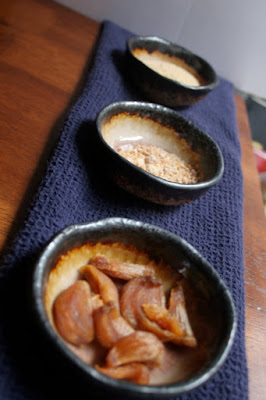Seared Tuna With Saltimbocca Beans

This picture demonstrates two things. The first is that I continue to suck at food photography. Second, my knife was too dull. But I am not here to talk to you about the tuna, my knife skills or my photography skills. The star of this show was the beans. Technically, I think these beans were born out of the echos of the Internet. First, I adapted the IdeasInFood pasta hydration technique for the beans. echo. I took sorted and washed beans and soaked them in prosciutto stock. After that, they went into a 180F water bath. The flavor of the broth really came through, and the beans had an edamame like texture. echo. After I had the beans, my mind went to Saltimbocca I had recently. I diced up some fresh mozzarella and drizzled on some sage oil. Prosciutto. Then I open up my rss newsreader. echo.

